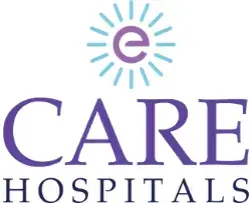Robot-Assisted Low Anterior Resection Surgery
Robotic low anterior resection has revolutionised the saratani ya rectal treatment. This robot-assisted procedure combines robotic systems' precision with minimally invasive surgery benefits. Studies have shown impressive advantages from robotic-assisted procedures when compared to traditional laparoscopic approaches. Robot-assisted procedures help patients recover quicker. Data from research and meta-analyses demonstrates a reduced need to switch to open surgery when a robotic system is used.
This article covers everything about robotic low anterior resection, its indications, pre-procedure cautions, and post-procedure care.
Why CARE Group Hospitals is Your Top Choice for Robotic Low Anterior Resection Surgery in Hyderabad
People recognise CARE Hospitals for their skill in using robot-assisted surgeries. They introduced innovative Hugo and Da Vinci X robotic systems. This advancement in technology raises the level of care that patients receive to new heights.
Our hospital has a team of highly trained surgeons specialising in robotic low anterior resection procedures. Our expertise in treating colorectal conditions makes CARE Hospitals the ideal choice. The exclusive operation theatre complex has been redesigned specifically for robot-assisted surgeries to deliver optimal outcomes.
Innovative Surgical Innovations at Care Hospital
CARE Hospital's robot-assisted systems provide remarkable advantages:
- High-definition 3D—This high-definition technology provide superior visualisation
- Robotic arms with extreme flexibility—This enables precise movements
- Open console—This enables the surgeons stay close during the procedure
Indications for Robotic Low Anterior Resection Surgery
Doctors recommend this procedure to treat:
- Saratani ya korofa (both colon and rectal)
- Ugonjwa wa kuvimba matumbo
- Ugonjwa wa kupitisha
Robotic Low Anterior Resection Procedure Approach
Low anterior resection stands out as the most common robot-assisted colorectal procedure. Surgeons remove the cancerous portion of the rectum while preserving normal bowel function. This technique helps surgeons reconnect healthy parts of the intestine and often eliminates the need for a permanent colostomy.
Maandalizi ya Kabla ya Upasuaji
- Patients need mechanical bowel cleansing 24 hours prior to the robotic low anterior resection surgery.
- Blood tests, imaging, and other pre-surgical tests are essential.
- Surgeons usually mark possible stoma sites before the procedure.
- The surgical team administers antibiotics to the patient as per the surgical instructions.
- Doctors administer general anaesthesia in order to control the pain during the procedure.
Robotic Low Anterior Resection Procedure
The da Vinci Surgical System requires multiple small abdominal incisions. The surgical team places patients in a modified Lloyd Davis position with Trendelenburg tilt. Surgeons remove the rectum's cancerous portion and nearby lymph nodes during the procedure.
Kupona baada ya upasuaji
- Wagonjwa hukaa hospitalini kwa siku 4-7.
- Patients pass flatus earlier compared to laparoscopic surgery (2 days vs 3 days).
- The robot-assisted surgery patients were instructed to have a fluid diet initially, followed by the soft and solid diet.
- Normal activities can be resumed within 3-6 weeks.
Hatari na Matatizo
Complications are rare and minimal with the robot-assisted procedure. These rare and possible complications might include:
- Leakage at the surgical connection (Anastomotic leakage)
- Kupoteza damu
- maambukizi
- Tatizo la kukojoa
- Matatizo na kazi ya ngono
- Blocked intestines
- Vipande vya damu in deep veins (DVT)
- Blood clots travelling to the lungs (embolism ya mapafu)
- Uharibifu kwa viungo vya karibu
- Problems with wound healing
- Temporary bowel paralysis (ileus)
- Development of an abnormal connection between tissues (fistula)
- Narrowing at the surgical joint (stricture)
- Hernia where the surgical tools were inserted
Benefits of Robotic Low Anterior Resection Surgery
Here is a list of advantages of robotic low anterior resection surgery:
- More precise technique
- Upotezaji mdogo wa damu
- Small cuts required
- Uwezekano mdogo wa kuambukizwa
- Wakati wa kupona haraka
- Shorter time spent in the hospital
- Decreased pain after surgery
- Superior view during procedure
- Improved protection of nerves
- Less noticeable scars
- Quicker return to daily life
- Higher accuracy in anastomosis
- Patients also face lower risks of conversion to open surgery.
Insurance Assistance for Robotic Low Anterior Resection Surgery
Insurance coverage exists for this procedure, though benefits vary by region. Our hospital's insurance team works to explain your policy coverage, eligibility, and required paperwork. They handle communication with insurers to get pre-authorization, process claims, and secure approvals. This helps avoid delays and makes things less complicated.
Second Opinion for Robotic Low Anterior Resection Surgery
Getting another opinion to decide on robotic low anterior resection surgery allows you to understand your treatment better. CARE Hospitals provides skilled surgeons who take time to examine your case, break down the available choices, and give advice that fits your specific health needs. This helps you feel more certain about the process, better understand it, and choose the right care plan to heal.
Hitimisho
Robotic low anterior resection has revolutionised rectal cancer treatment. Patients recover faster, start eating sooner, and leave the hospital earlier than with conventional approaches. The surgical robots at CARE Hospitals enable doctors to operate with precision through minimal incisions, which speeds up patient recovery.
Every rectal cancer patient should have access to the most effective treatments available. Many insurance plans now cover this state-of-the-art procedure. Patients who feel uncertain about their treatment options should ask for a second opinion to discover more possibilities.
Robot-assisted systems continue to evolve with promising developments. CARE Hospitals remains at the vanguard of combining human expertise with robot-assisted precision to help patients overcome rectal cancer.
 HyderabadHospitali za CARE, Banjara Hills CARE Kituo cha Wagonjwa wa Nje, Banjara Hills Hospitali za CARE, Jiji la HITEC Hospitali za CARE, Nampally Hospitali ya Gurunanak CARE, Musheerabad CARE Hospitals Outpatient Centre, HITEC City Hospitali za CARE, Malakpet
HyderabadHospitali za CARE, Banjara Hills CARE Kituo cha Wagonjwa wa Nje, Banjara Hills Hospitali za CARE, Jiji la HITEC Hospitali za CARE, Nampally Hospitali ya Gurunanak CARE, Musheerabad CARE Hospitals Outpatient Centre, HITEC City Hospitali za CARE, Malakpet Raipur
Raipur
 Bhubaneswar
Bhubaneswar Visakhapatnam
Visakhapatnam
 Nagpur
Nagpur
 Indore
Indore
 Ch. Sambhajinagar
Ch. SambhajinagarKliniki na Vituo vya Matibabu



